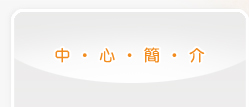顯微注射目的是解決因嚴重男性因素導致精、卵無法受精的問題,做法是在顯微鏡下將單一精蟲注射進入卵子內使其受精。此外,使用顯微注射完成受精適應症也包括:(1) 非男性因素的不孕症,但無法藉由傳統體外受精方式達成卵子受精;(2) 冷凍解凍後的卵子;(3) 體外催熟的卵子;(4) PGD/PGS (胚胎著床前遺傳診斷/篩檢)為避免胚胎檢體受到胚胎外其他精蟲干擾檢查的準確性(參考文獻1, 2)。
若非男性因素的不孕症或前述四種情形卻施予顯微注射,不僅無法提高卵子的受精機率,甚至可能因注射過程使卵子受傷,導致懷孕率下降,因此不建議顯微注射使用於全部之試管嬰兒個案。當顯微注射使用於不明原因之不孕、高齡不孕婦女、卵子數少之婦女,證據顯示懷孕率並不會因此提高 (參考文獻3, 4)。
顯微注射的缺點是:(1) 非男性因素的不孕症卻施予顯微注射可能導致懷孕率下降 (參考文獻5);(2) 增加試管嬰兒費用;(3) 增加胚胎技術員工作負擔; (4) 是否微幅增加新生兒先天性缺陷尚無定論 (參考文獻1)。
參考文獻:
1. What is intracytoplasmic sperm injection (ICSI)? (https://www.asrm.org/uploadedFiles/ASRM_Content/Resources/Patient_Resources/Fact_Sheets_and_Info_Booklets/ICSI-Fact.pdf)
2. Jones J, Horne G, Fitzgerald C. Who needs ICSI? A nationwide UK survey on ICSI use. Hum Fertil 2012;15:144-9.
3. Practice Committees of the American Society for Reproductive Medicine and Society for Assisted Reproductive Technology. Intracytoplasmic sperm injection (ICSI) for non-male factor infertility: a committee opinion. Fertil Steril 2012;98:1395-9.
4. Boulet SL, Mehta A, Kissin DM, Warner L, Kawwass JF, Jamieson DJ. Trends in use of and reproductive outcomes associated with intracytoplasmic sperm injection. JAMA 2015;313:255-63.
5. Bhattacharya S, Hamilton MP, Shaaban M, Khalaf Y, Seddler M, Ghobara T, Braude P, Kennedy R, Rutherford A, Hartshorne G, Templeton A. Conventional in-vitro fertilisation versus intracytoplasmic sperm injection for the treatment of non-male-factor infertility: a randomised controlled trial. Lancet 2001;357:2075-9.







